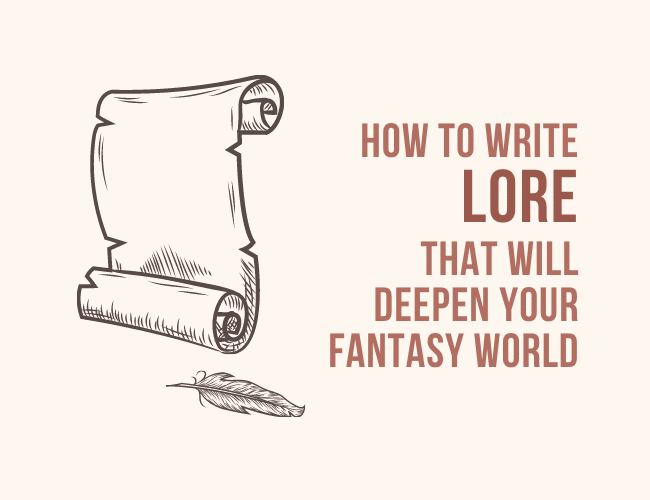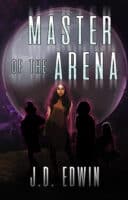We can all name a few good fantasy stories off the top of our heads—Harry Potter and Lord of the Rings come to mind. A good fantasy story is immersive. It pulls you in and makes you feel like it’s real, even though it very obviously is not.

The Problem With Fantasy World-Building
The best way to achieve this immersion is through world-building, which can be an arduous and intimidating process. After all, creating an entire world is no easy task, and fantasy settings can be even more challenging.
But what if you don’t want to spend a lot of time world-building? Your characters are raring to go, ready to fire up that magic, and go on that quest. You want to start using those magical gadgets and mysterious technology and leap into the action.
However, you also don’t want to spend five pages explaining background details about the history of the kingdom that created the gadgets or how and why the ancient technology work like they do.
But without it, how will your readers know what you’re talking about, or how amazing, deep, and complex this world you’ve created is? How will you ever fit everything into your story without making your book one big exposition?
The Solution: Write Lore
The key lies in lore. Lore is defined as “a body of traditions and knowledge on a subject or held by a particular group, typically passed from person to person by word of mouth.”
Lore tends to exist in cultures with long and complex histories, something that is extremely common in fantasy genres. In fact, I don’t know a fantasy story that doesn’t include at least one old, complex culture.
So why lore?
The biggest advantage of using lore to establish a fictional setting is that a piece of lore doesn’t have to be long or detailed. Lore can say a lot with very little.
More than that, it can invoke curiosity far more than dry exposition can. It invites the readers to ask questions about the world and wonder what else might be hidden within the story.
This is because lore is a story your characters would tell.
A Story Within a Story
Let’s say a writer has created a basic idea of an island kingdom. In the sea surrounding the kingdom, hideous, skeletal mermaids prey on sailors. The people of the kingdom avoid overseas trade and have developed technology to fly over the sea rather than sail, all to avoid the mermaids. This is a take on mermaids that is rather different from the usual fare.
The writer wants to start out the story with the protagonist, who is a young pilot nervous about his first mission over mermaid-infested waters.
As the story begins, the protagonist expresses his apprehension about flying over the water and his fear of mermaids. This instantly raises questions—why is he afraid? What’s with mermaids? Is it a fear only he has?
The answers to these questions can be provided with character conversation and exposition, which is perfectly fine. However, using cumbersome exposition or extensive dialog to explain a background situation or historical event runs the risk of slowing down the action of the story.
The writer wants the readers to know right away about the dangers of mermaids, but doesn’t want to bore them either. So instead of a lengthy prologue, an extended dialogue, or wordy exposition, they slip a short story within a story before the first chapter:
They say the third king of the island pioneered the Flight Project, after losing the first and second kings—his father and brother—to the lanky swimmers of the sea. He had great faith that the answers laid in the skies, after far too many sailors and tradesmen met their doom in the dark waters and ended up in the bellies of the mermaids. At the time, his ideas seemed preposterous, but so eager he was to inspire his people that he himself piloted the inaugural flight of the very first flying machine. And inspire them he did, and thus his work was carried on.
But that was the work of the fourth king, as the first flying machine had considerable design flaws, and the brave third king ended his very short reign in the bellies of the mermaids.
This little story, rather than listing out boring facts or giving a history lesson, instantly charms the reader and opens up possibilities. Now the reader understands the pilot’s fear of mermaids and the loose back story of how his occupation came about. If the pilot says a short prayer to the spirit of the third king to bless his flight, the reader immediately knows why.
The Magic of Lore
Writing lore does more than just explain the backstory or build the world. It breathes life into your story and hints to your readers that there are many layers waiting to be peeled back.
Readers don’t want a class on your expansive world—instead, give them a story that a character in your story might tell.
 Master of the Arena, the prequel to J. D. Edwin's Headspace, is here!
Master of the Arena, the prequel to J. D. Edwin's Headspace, is here!
You saw Astra fight for her life—and the fate of the world—in Headspace‘s alien arena. Now, discover the story behind the master who pulls the strings and designs each deadly trial.
Order your copy of Master of the Arena today!
Have you read any fantasy books with especially good in-world lore? Share in the comments!
PRACTICE
It's your turn to practice writing lore. Write a short piece of lore that's set in a world of your creation. Try to think from the perspective of a character who lives in the world. The lore can center around many things, such as:
- A strange tradition
- An old war
- A common ritual
- A monument
Take fifteen minutes to write. When you're done, share your lore in the Pro Practice Workshop, and be sure to leave feedback for your fellow storytellers!
J. D. Edwin is a daydreamer and writer of fiction both long and short, usually in soft sci-fi or urban fantasy. Sign up for her newsletter for free articles on the writer life and updates on her novel, find her on Facebook and Twitter (@JDEdwinAuthor), or read one of her many short stories on Short Fiction Break literary magazine.



0 Comments